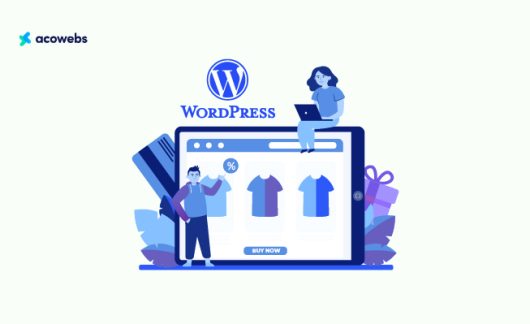Table of Contents
Over the past few years, the retail sector has undergone significant changes, and one new trend seems to be here to stay. Phygital retail experiences, where digital and physical components coexist, present chances to engage customers with your business more deeply.
Customers anticipate having smooth interactions with brands at their convenience. Retailers must ensure that both their online and in-store environments can accommodate these needs.
Currently, more consumers are going back to buying in actual places, so companies are capitalizing on this trend by creating physical locations that mirror popular online features.
It is difficult for modern firms to overlook the financial benefits of combining physical and digital channels to offer excellent shopping experiences.
Through the integration of click-to-buy and touch-and-feel, organizations may optimize revenue growth and customer pleasure. Therefore, digital retail can be the way to go if you want to increase your profit margin.
This article will delve into the definition of phygital, tips and strategies to run a phygital shop, its benefits in retail and eCommerce, and some real-life examples.
What Is Phygital?
The retail industry is quickly embracing the buzzword “phygital.” It all comes down to bringing the most outstanding elements of the real and virtual worlds together in one location.
Phygital, which is the future of retail and eCommerce, serves as a link between the digital and physical realms. The goal is to integrate the most significant elements of the digital and physical client experiences.
The opportunity for retailers is to create a hybrid strategy that allows customers to travel between digital and physical places with seamless integration. This step might include everything from seamless click-and-collect and real-time in-store stock levels to immersive, networked physical or virtual storefronts.
Retailers with physical and digital presence typically embrace the merger of the two worlds, but it’s not exclusive.
Phygital serves as a link between the digital and physical realms. The goal is to integrate the greatest elements of the digital and physical client experiences.
One benefit of physical retail is that it combines the best elements of both brick-and-mortar and eCommerce business models to enhance customer experience and increase sales revenue.
A digital store allows customers to customize how they buy, pay, and get their products, while a physical store will enable you to offer experiences that aren’t possible online. Below are some tips and strategies to succeed in phygital retail.
Phygital Tips and Strategies for Success
Similar to omnichannel retail, phygital retail offers customers the option to find and purchase goods via their chosen channel.
The process of developing a physical retail strategy includes simplifying all of these methods, whether they are used in-store, online, on social media, or at a temporary pop-up shop.
To use the best aspects of physical and digital retail experiences, many companies that implement the physical retail model combine several tactics. Below are some strategies to succeed in the future of retail and eCommerce.
1. Give Your Customers Options
Customers who shop on your eCommerce website can pick up their orders in-store or at a prearranged pickup point by using the buy online, pickup in-store (BOPIS) option, which is also commonly called click and collect.
In addition to saving you and your clients money on shipping, it may boost sales if customers buy more things while picking up their orders from your physical store.
Similar to BOPIS, curbside pickup is an additional option for order fulfillment. The customer places the order online and picks it up in person; they don’t need to get out of their automobile.
They tell you by text, phone, or email when they arrive at your retail location, and you or your sales team take their order outside to the curb. This physical retail approach increases consumer happiness and is incredibly convenient.
2. Offer Self-Checkout Options or None at All
Self-checkout is one such channel that responds to the increasing need for contactless transactions and faster wait times.
Retailers enable customers to scan and pay for things on their own by implementing self-checkout alternatives using mobile apps and in-store Point of Sale (POS) systems.
Amazon Go‘s “just walk out” checkout process is an intriguing idea that might work for merchants of all sizes in the future. After entering the store and selecting their purchases, customers leave.
Moments after the consumer leaves the store, the payment is automatically handled through the Amazon Go app, thanks to digital technology that tracks them and their purchase.

Self-checkout is a fantastic approach to digitizing the in-store checkout process in the interim. It allows customers to pay whenever it’s convenient for them. To do this, you can shorten the line at the checkout desk by putting self-checkout kiosks around your store.
By enabling consumers to finish purchases at their leisure, this easy and effective approach improves the overall shopping experience while reducing interaction with store employees.
3. Utilize Data To Motivate Customization
Product recommendations made using consumer data to offer customized shopping experiences are dependent upon previous purchases, AI chatbots, and personalized discounts.
Vogue Business reports that 16% of Gen Z customers want customized offers to be emailed to their phones while they are in-store. As a result, you may customize in-store experiences by utilizing data from online interactions.

4. Leverage AR and VR Applications
In physical retail, augmented reality (AR) and artificial intelligence (AI) are frequently utilized to give clients distinctive and customized purchasing experiences. By enabling users to “try on” clothing, for example, augmented reality (AR) can improve the online shopping experience.
Conversely, artificial intelligence (AI) can be utilized to power chatbots that offer tailored product recommendations or respond to online client inquiries. 24/
The distinction between digital and physical reality is blurred by augmented reality (AR) and virtual reality (VR) technology.
Virtual reality (VR) is a fantastic tool for digitally immersing clients in an experience where they can learn about your business and products. Retailers are adopting AR to allow customers to try on garments virtually while they are in-store.
Take Warby Parker, for instance. Their smartphone app now includes a virtual try-on capability. Customers can use this function to view how various frames appear on their faces without having to go to an actual retail location.

5. Introduce Mobile Commerce
Businesses should include mobile commerce in their physical strategy since more and more customers are shopping on their mobile devices.
A Yes Marketing study found that 57% of customers had used a retailer’s mobile app when they were in-store.
Customers may quickly peruse merchandise, make purchases, follow orders, and get in touch with customer support via a mobile app. It can also interface with in-store systems to enable features like click-and-collect services, digital coupons, and smartphone payments.
6. Utilize Social Media
It’s feasible to give your physical retail store a digital presence through social media platforms like Facebook, Instagram, TikTok, and others.
Even better, you can use Facebook’s and Instagram’s eCommerce capabilities to implement your social commerce plan and conduct direct sales on social media.
Promoting client loyalty programs, sharing exclusive deals, and running advertisements are all quite effective on social media.
Additionally, social media interaction with customers is a means of fostering digital connections and offering a consistent consumer experience throughout all platforms. Gucci runs creative social media posts to attract millennials to all their social media accounts.

One method to merge the digital and real worlds is, for instance, to launch a time-limited promotion that gives consumers the chance to remark on an Instagram picture and win 10% off their subsequent in-store purchases. The first five followers to comment on the post can be the ones to receive this deal.
7. Create a Google Business Profile
Another method to combine your online and offline presence is to create a Google Business Profile (previously Google My Business) listing. It also enables you to interact with clients, get testimonials, and advertise your retail store online.
One local SEO tactic to draw in clients who are looking locally for your products is to maintain an updated GMB listing with photographs, your location, and exclusive deals. Facilitating clients’ internet discovery aids in boosting foot traffic inside your store.
8. Include Customer Reviews
It is vital to encourage people to submit reviews since they have the power to convert website visitors into paying customers. Another excellent physical retail technique is to ensure that customers may check online evaluations while they are in-store.
This can be achieved by putting online reviews adjacent to related products in-store, which will allow customers to make decisions more quickly and save time by not having to search for reviews online.
You can accomplish this by putting iPads in strategic locations throughout your store or by using signage to direct customers to product reviews that are pertinent to the items they are examining.
Benefits of a Phygital Retail
When physical and digital channels come together, businesses and customers can benefit from the best of both worlds. Many people thought that traditional brick-and-mortar retailers would disappear as eCommerce and digital marketing grew in popularity.
The truth, though, is ultimately the reverse. The merging of the physical and digital spheres has ushered in an exciting new era of retail rather than displacing physical establishments.
Below are some of the benefits of phygital retail.
1. Increased Customer Outreach
Businesses may go far beyond the confines of a physical storefront thanks to physical retail. Customers may now purchase whenever they want, from anywhere in the world, thanks to the convergence of physical and digital retail, which increases a company’s consumer base.
Glossier and other online businesses use pop-up stores as a terrific way to reach a wider audience. Initially a beauty brand available primarily online, Glossier has expanded its consumer base by opening pop-up storefronts in different cities.
These makeshift physical locations provide them the chance to explore new markets while also offering a distinctive, engaging experience to clients who usually purchase online.
2. Increased Personalized Recommendations
One of the most notable advantages of physical retail is the ability to provide personalized service and product recommendations.
Personalization is made possible by the use of commerce solutions such as Shopify POS, which easily integrates with your online store and syncs customers’ online and in-store purchase histories to their customer profiles.
Store employees can now see a customer’s preferences in a more comprehensive way, which helps them make more informed product recommendations, build deeper relationships, and eventually turn more in-store interactions into sales.
According to McKinsey, personalization can increase revenue growth by up to 15% and increase marketing spending efficiency by up to 30%.
Customized interactions improve the purchasing experience for your customers, raise income for your business, and help you receive higher returns on your advertising investment.
Lastly, customized purchasing experiences result in longer-term client retention, raising your customer lifetime value (CLTV).
3. Enhances Customer Loyalty
Interactive technology is frequently used in physical techniques to enhance client engagement.
For instance, the phygital shopping experience offered by Nike’s House of Innovation in New York includes personalized product customization, on-demand shoe creation, and a digital checkout process—all of which are intended to delve deeper into the customer experience.

Long-term, this increased interaction fosters customer loyalty since returning consumers are more inclined to seek out one-of-a-kind experiences.
4. Smooth Customer Experience
Customers can enjoy a seamless purchasing experience that links the online and offline worlds in a physical retail setting. This process may entail looking over things online, testing and buying them in-store, and then handling digital after-sales support.
For example, IKEA Place is an augmented reality software that combines the ease of digital purchasing with the assurance of in-person shopping by letting users see how furniture will fit and appear in their homes before making a purchase.
5. Availability of Extensive Data
Businesses can gain a deeper insight into customer habits and preferences with the help of physical retail. Retailers that properly analyze this data can improve their product mix, provide more individualized marketing, and gain a deeper understanding of their customers.
With their online tool Fit Assistant, the British apparel retailer ASOS is a prime example of a business leveraging extensive data in a physical retail strategy.
By offering sizing suggestions based on client information and past purchases, this technology lowers the possibility of returns while raising consumer happiness.
6. Prevents Stockouts
Unified inventory levels and accurate reporting are two advantages of using the same platform to manage your physical and online stores; these features help you avoid the dreaded stockout.
You can view how much of a given item or option you have on hand in your warehouse and at each of your shop locations using Shopify.
With this feature, retailers may proactively detect when their inventory is running short and place additional orders before their stock runs out.
Examples of Phygital Success
With their retail locations, numerous well-known businesses have already embraced the phygital trend. Both digital and physical stores have advantages and disadvantages, and it appears that customers are seeking a combination of the two.
Digital retail isn’t for everyone, though. The intricacies of maintaining inventories across channels call for a planned logistics strategy. However, phygital retail is the way of the future of retail and eCommerce for a lot of firms such as;
1. Harry Rosen
This high-end menswear boutique has successfully created a digital version of its well-known in-person advisor services.
Advisors design visually appealing wish lists for their clients, which they may buy in person or online. This seamless integration of shopping and stores has shown to be effective and time-saving for customers.
2. Amazon Fresh
One excellent illustration of a physical retail experience is Amazon Fresh. This creative idea combines the traditional in-store experience with the simplicity and convenience of online shopping.
For access to the store, shoppers use the Amazon app on their smartphones. Sensors in the physical store detect things as they are picked up by the customers and instantly add them to their virtual cart within the app.
An item is taken out of the customer’s virtual cart if they decide to change their decision and return it to the shelf. When they’re done buying, they walk out of the store, and Amazon sends them a receipt and bills their account for the things in their virtual basket.
No more standing in line, picking through each item one at a time, searching for coins, or fumbling with cards.
The business concept of Amazon Fresh handles everything, giving consumers a pleasant shopping experience that makes use of both digital and physical elements.
3. Ulta Beauty
Whether shoppers are at the store, at their house, or on the go, some creative projects, like GLAMLab and the Virtual Beauty Advisor, make use of cutting-edge AI and AR technology.

While GLAMLab allows users to put on makeup virtually by utilizing machine learning algorithms to identify facial features and produce a 3D appearance that changes with their expressions, the Virtual Beauty Advisor provides individualized product recommendations.
4. Sephora

One excellent example of physical retail in the cosmetics sector is Sephora’s Virtual Artist App. Customers can use augmented reality to try on various makeup products virtually.
The buyer can use the camera on their smartphone to examine how a product appears on their own face after choosing it.
If customers decide they like the item, they may put it in their cart and select to pick it up from a nearby store or have it delivered to their home.
5. Pret A Manger
Customers who subscribe to the Pret Perks coffee subscription may conveniently enroll and manage their subscriptions via the mobile app, where they can also receive personalized discounts and suggestions based on their past purchases and preferences.
Benefits from the program, which span the digital and physical domains, can be easily redeemed at any participating physical store. Examples of these benefits include free daily coffees and first access to new menu items.
Conclusion
The degree of interconnection between our digital and physical worlds appears to be increasing, even though no one can forecast the future.
Consequently, it stands to reason that more consumers will demand that merchants use a physical retail strategy. Being able to provide a more customized experience will surely turn into a competitive advantage for a retailer.
Retailers need to take advantage of the potential presented by the physical future and set out on a path that breaks down barriers and pushes the bounds of consumer connection to new heights, as customers want integrated and personalized experiences.
With the way that consumer behavior is changing, digital technology offers merchants a strong chance to prosper in the retail landscape of the future.
Retailers can build a shopping experience that meets the different needs of modern customers and enhances customer happiness and loyalty while remaining competitive in the market by fusing the best elements of the physical and digital worlds.
It’s time for merchants to embrace the future and realize the full potential of this cutting-edge strategy as the phygital revolution gets underway.
Acowebs are the developers of the WooCommerce Product Labels let customers include custom product labels or product badges for the WooCommerce products. WooCommerce sales badges plugin provides you with different label styles and customizations for labels. It offers a easy-to-use UI to add labels to the selected products or categories.











 Login
Login
 Cart
Cart








